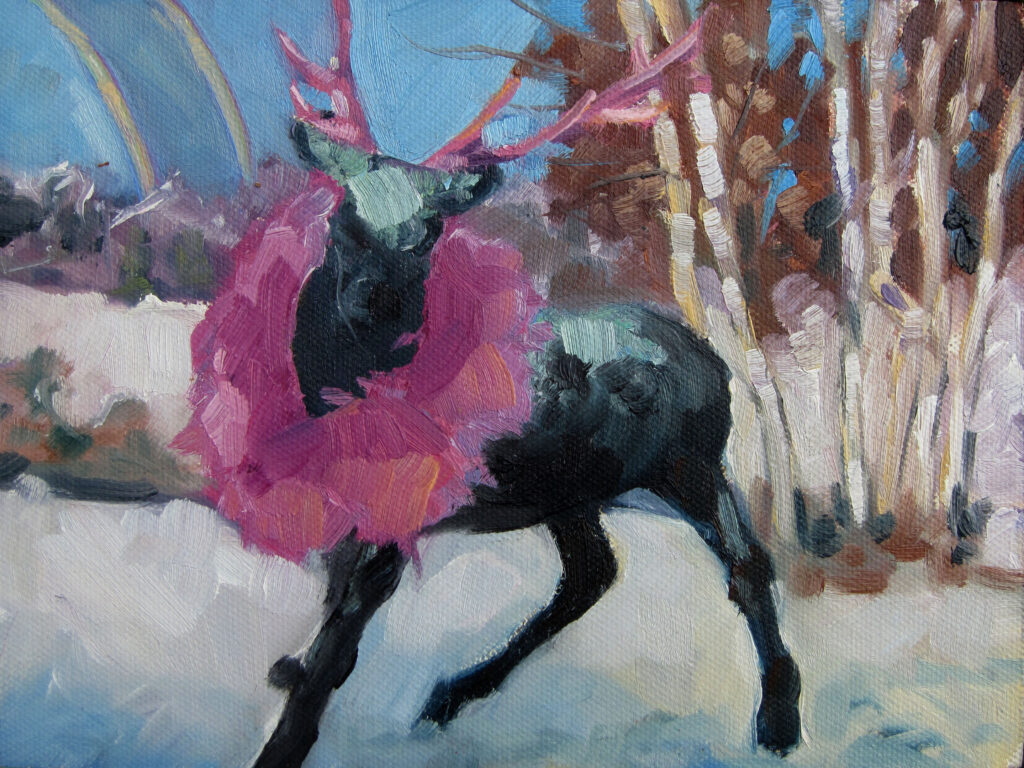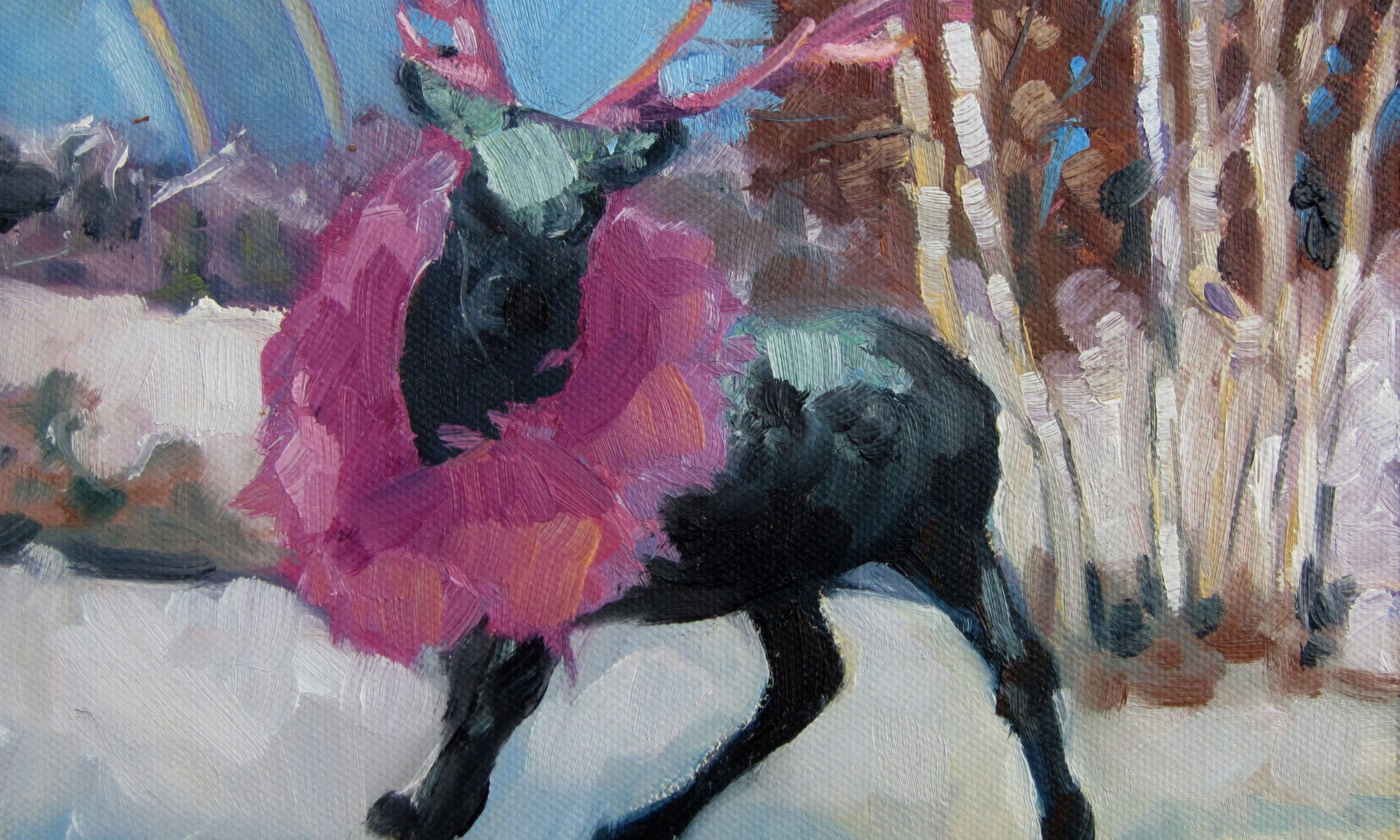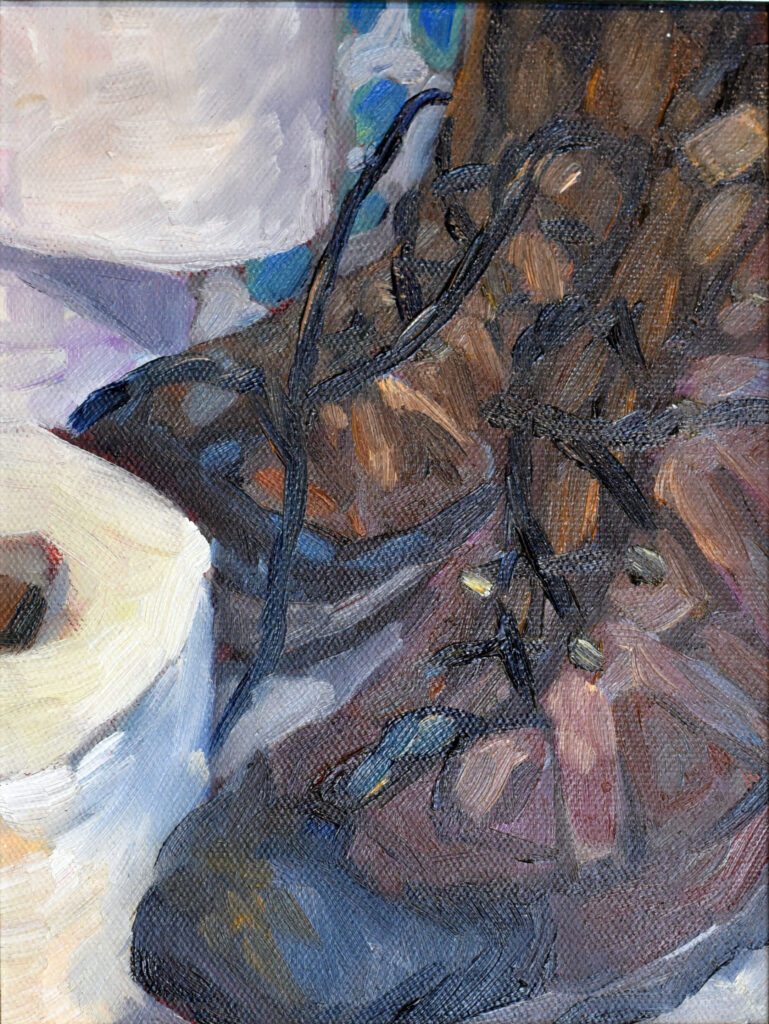
I have a wicked TJ Maxx habit. It’s all fun and games until one of my kids pulls me into the so-called ‘wall art’ section. That’s mostly dreck, and it’s not cheap. A savvy customer could buy real art for just a little bit more money, and end up with an asset that appreciates, rather than something destined for a landfill.
Many young people haven’t a clue how to start collecting art. Those of us with mature collections can help them overcome this by giving them artwork. I’ve given paintings (mine and others’) to each of my four children. Two buy art themselves, one is saving to build a house, and one just isn’t interested. That’s not a bad result.

If you’ve never collected paintings, here are some tips to get you started.
- Define your interests: Visit galleries, museums, and art fairs to see what resonates with you. Don’t worry overmuch about matching your décor; that will change over time. Instead, look at the work in its own right. Is it catching your eye because of composition, content, or color?
- A little knowledge is an excellent thing: I have written about the basic elements of design here. An art history or art appreciation course is a great way to start developing a critical eye.
- Set a budget: Determine how much you’re willing to spend on art. You might be shocked to realize that you can build a decent art collection for the same amount you currently spend on tchotchkes, shoes, or avocado toast.
- Beware cheap prints: These are not to be confused with fine art prints, which are made by artists in limited editions, and works of art in their own right. Prints are cheap in the short run, but they will never appreciate in value over time.
- Attend art events: Go to gallery openings, auctions, and art shows. This will teach you a lot about the art world, even if the wine and cheese are terrible.
- Buy from emerging artists: Collecting from up-and-coming artists can be a cost-effective way to start your collection while supporting new talent.
- Think about where you’ll hang the piece: While I don’t think you should buy art to match your couch, some idea of where it will end up is helpful. When I was younger, my furniture was terrible, and I moved it and art around constantly. Today my furniture is mostly still terrible, but I don’t bother rotating it; I do still move art around.
- Buy one good piece rather than a lot of subpar ones: Your mother told you the same thing about shoes, and it’s good advice. Just as there’s fast fashion, there’s fast art.
- Write it down somewhere: Document your purchases, even if that means sticking a note in the back of the frame. Someday, the provenance of that painting might be extremely important.
- Stay openminded: Just as my own painting has changed over time, so has my taste in art.

Happy collecting!
Just a quick reminder
Artworks for Humanity to benefit Waldo County Habitat for Humanity, is tomorrow.
Reserve your spot now for a workshop in 2025:
- Advanced Plein Air Painting, Rockport, ME, July 7-11, 2025.
- Sea and Sky at Acadia National Park, August 3-8, 2025.
- Find Your Authentic Voice in Plein Air, Berkshires, MA, August 11-15, 2025.
- Immersive In-Person Fall Workshop, Rockport, ME, October 6-10, 2025.


